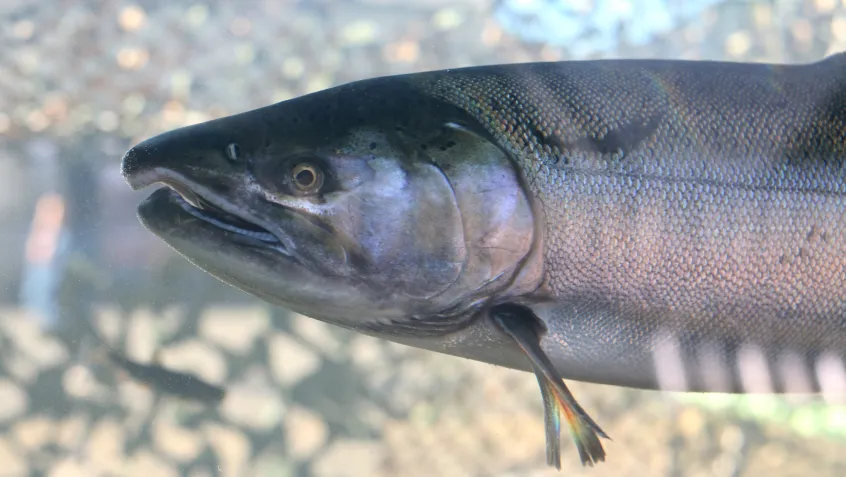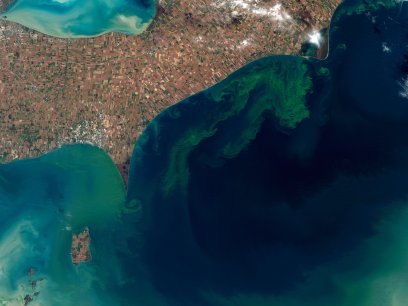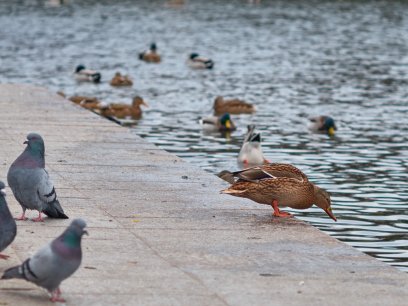
An energetic undercurrent roils the waters of the rivers of the northwestern United States. The coho salmon have made their prodigal return to reproduce in the rivers where they were born. Parts of the fish change to a dark maroon color as they make their way from the open ocean to swim upstream, fighting against the river currents to reach the spawning grounds, where the salmon mate and complete their lifecycle. However, despite the long journey upstream, some coho salmon that arrive in the streams of urban areas reach a premature end. The salmon mysteriously die before they are able to breed. What force could possibly be behind the large number of deaths of coho salmon?
The problem with stormwater runofff
A study shows that the answer may have to do with stormwater runoff. Rainwater that flows through cities and other developed areas can pick up and carry along pollutants and chemicals from urban zones. From the storm drains the water is then emptied into streams and rivers, where the pollutants carried by the runoff enter the waters and mingle with the salmon. Increased urbanization and development leads to more polluted runoff in rivers around cities, causing problems for the salmon that use those areas for spawning.
In a controlled experiment, the coho salmon nearly died within hours of exposure to stormwater runoff, the study finds. The heavy metals and toxins in the stormwater poison the fish, making it difficult for them to breathe. The coho salmon that overcome the long journey don't die of exhaustion; they are being exposed to these heavy metals and toxins as they swim further inland close to urbanized areas. Coho salmon are indicator species of water quality, meaning they are nature's gauges for detecting the health of the environment. The high numbers of coho salmon that die near the urban centers can indicate the high levels of human pollution in the area that are a result of increased urbanization. While the pollution does not affect all salmon, such as a different species named chum salmon, stormwater runoff causes problems beyond just fish.
Not just a salmon issue
Stormwater runoff that carries pollution can also affect human health. Many carcinogens, such as heavy metals that can have toxic effects on humans, are among the pollutants found in stormwater runoff. The contaminated water, carrying pathogens and harmful bacteria, can also be a source of water-borne illness. Stormwater runoff from urbanized areas can contaminate the drinking water of the 42 million people in the US that depend on private water supplies, making stormwater runoff a public health hazard.
In this manner, the journey of the coho salmon mirrors the health problems faced by communities in urban areas. Both depend on effective stormwater management, and neither the plight of the salmon nor human health are lost causes. There are easy steps that can be taken to reduce stormwater pollution and protect the streams and rivers near your community. To take part in reducing pollution in your community click here.
Sources:
- Carson, Hartwell, Bill Eaker, Phillip Gibson, and Mike Randall. 2014. “Human Health Impacts from Stormwater Runoff.” http://riverlink.org/wp-content/uploads/2014/01/stormwaterseriesfinal2.pdf
- McIntyre, Jenifer K., Jessica I. Lundin, James R. Cameron, Michelle I. Chow, Jay W. Davis, John P. Incardona, and Nathaniel L. Scholz. 2018. "Interspecies variation in the susceptibility of adult Pacific salmon to toxic urban stormwater runoff." Environmental Pollution 238: 196-203. https://doi.org/10.1016/j.envpol.2018.03.012
- National Oceanic and Atmospheric Administration. 2017. “Coho Salmon.” Accessed April 19, 2018. http://www.nmfs.noaa.gov/pr/species/fish/coho-salmon.html
- US Environmental Protection Agency. 2018. “NPDES Stormwater Program.” Accessed April 19. https://www.epa.gov/npdes/npdes-stormwater-program


